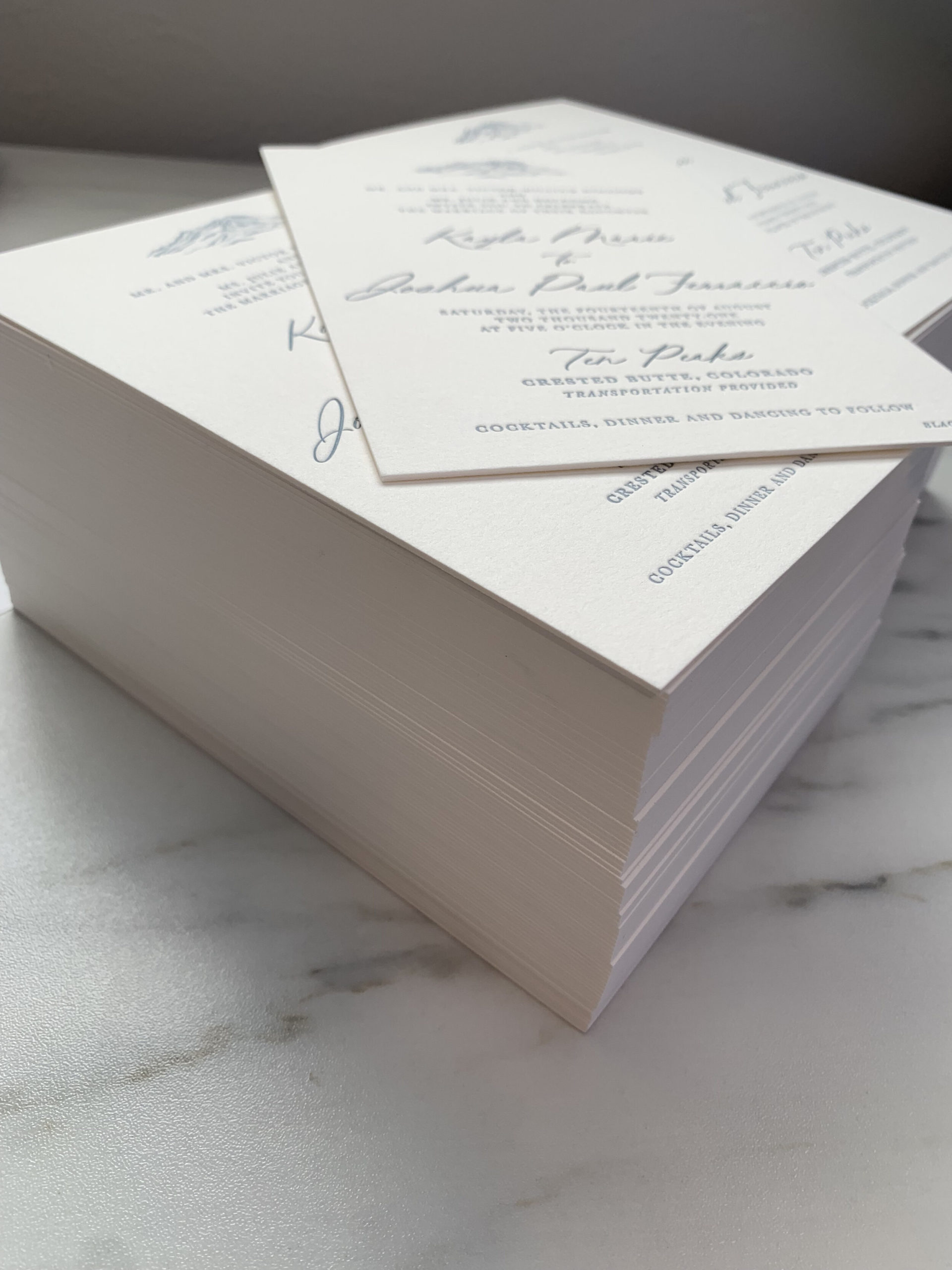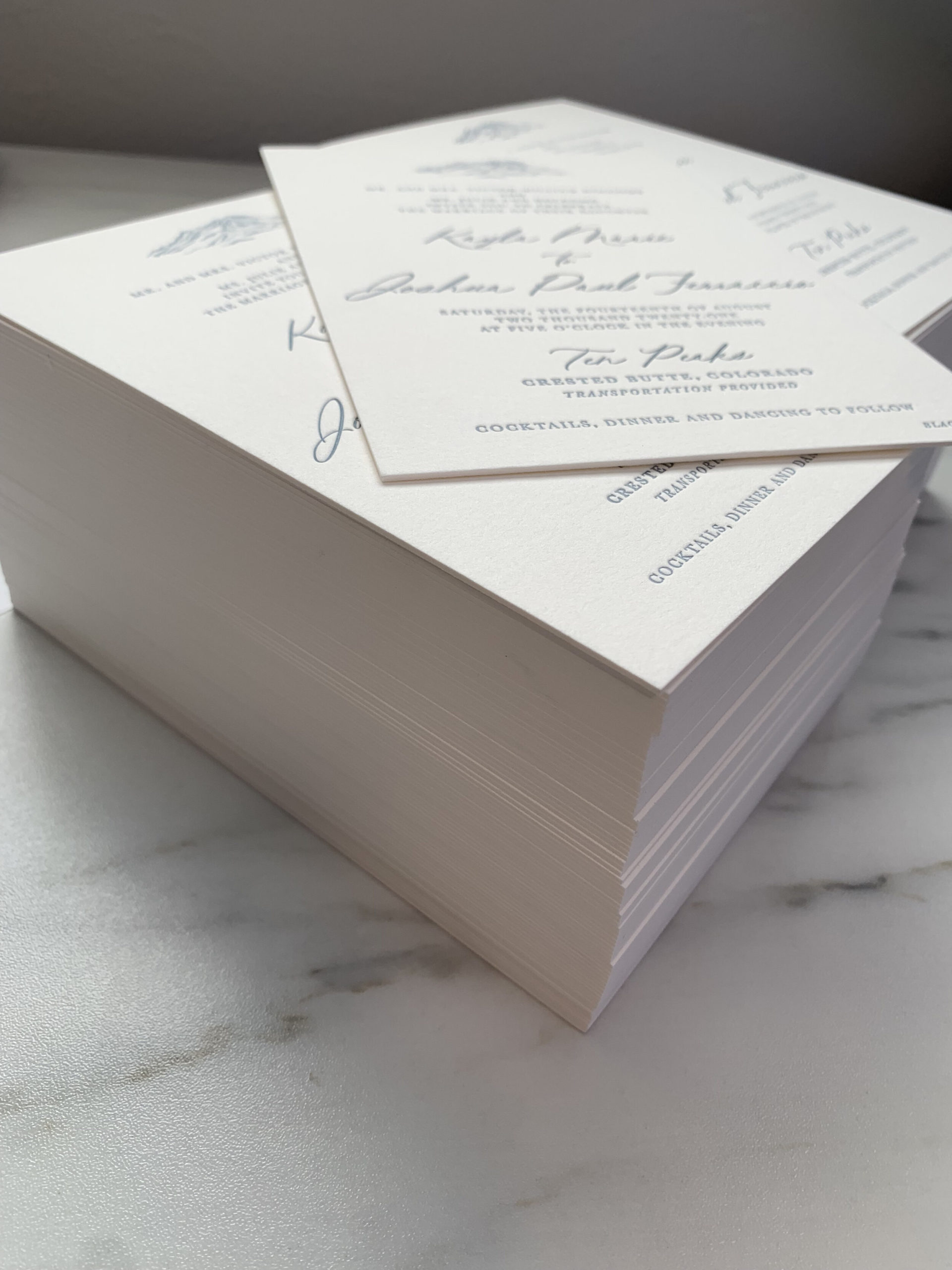This is part eighteen of a series called One a Day in May, where we will review one wedding stationery term every day in May!
It seems simple enough to say that lightweight paper is thin and heavy-weight paper is thick, but there is actually a lot of work that goes into determining the precise weight of a paper. First, the paper’s category is important. There are a handful of paper categories but the most common in stationery design are “text weight” and “cover weight” papers.
Second, we should talk about the paper’s “poundage” or weight, in pounds. Text and Cover weight papers are both cut down from larger parent sheets, called their “basis.” A paper’s poundage is determined by weighing a 500-sheet ream of the basis paper. So 110 pound cover stock, means that 500 of the cover stock parent sheets weigh 110 pounds.
Putting these two pieces of information together gives you the paper’s weight. Text weight papers are cut from parent sheets that are almost twice the size of a Cover weight parent sheet. So that means that 80 pound (often written as 80#) text weight paper is about half the actual thickness/weight of 80# cover stock paper.
Is your head spinning yet? Don’t stress, we’ve gotchu. We have samples from all our favorite printers so we know exactly what paper your design will work best with! We start with our base paper, 120# eggshell, and then suggest any other paper types that might make your invites shine! Just keep in mind that i a weight for the paper it will mildly affect the final cost of your invites and might impact your printing options in different ways but we love figuring that stuff out with you! Also, thick luscious paper is worth any/all hurdles we may have to jump through. *insert drool emoji*

